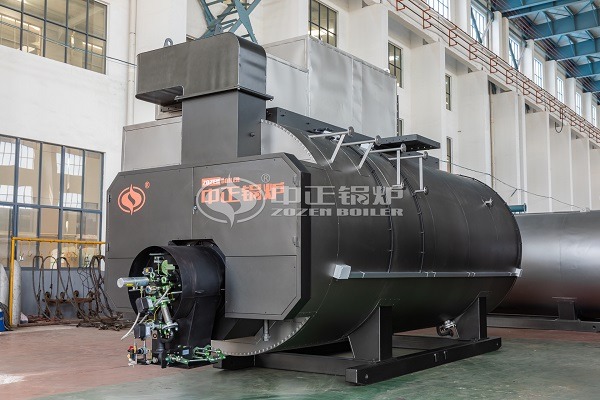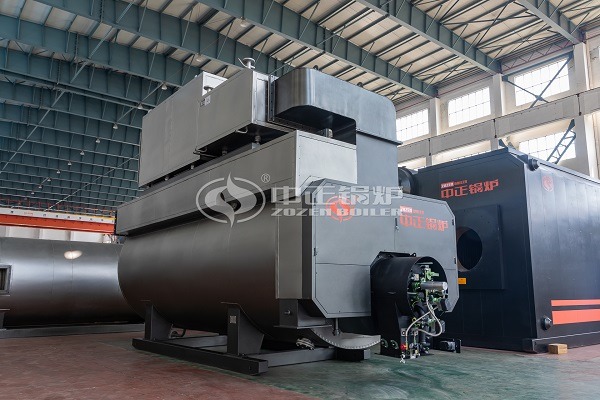When the oil fired fire tube boiler is running, the fuel enters the burner from the external air source and generates a high-temperature flame through the automatic adjustment and automatic ignition function. It enters the combustion chamber from the front end of the furnace, returns to the tube plate of the combustion chamber, turns back from the inner wall of the furnace, and flows to the front smoke box of the boiler, completing the first and second return journeys. Then, the front smoke box body enters the convection heating surface, leaves the boiler at the rear of the rear smoke box, and is discharged into the atmosphere through the chimney, completing the third return journey. The horizontal fire tube boiler device has front and rear smoke boxes, which makes the boiler easy to maintain.

Fire tube boilers are equipped with industrial burners with good technical performance. It adopts advanced technologies such as automatic combustion proportional adjustment, automatic adjustment of water supply, program start and stop, and automatic operation. And it has automatic protection functions such as ultra-high steam pressure and flameout. This type of boiler product has the characteristics of compact structure, safety and reliability, easy operation, rapid installation, less pollution, low noise and high efficiency.
The control functions of oil-fired boilers mainly include boiler water temperature control; boiler outlet water temperature control; water shortage and over-temperature protection; sensor fault self-check; fuel shortage indication; burner flameout alarm; hot water pump control. Boiler indication states are mainly control power, control start, electric water pump operation, fan start and other signals, which are indicated by green indicator lights; large fire burning, small fire burning and other states are indicated by yellow indicator lights; burner failure and other states are indicated by red indicator lights . The horizontal fire tube boiler adopts the threaded structure of the smoke pipe, which strengthens the heat transfer effect.
After closing the power switch of the quick-installed fire tube boiler, turn the water pump control switch from the stop position to the manual position. After the boiler feed water rises to the normal position, turn the pneumatic and automatic manual switches to the automatic position. Then close the burner power switch, and turn the controller’s large and small fire switch to the fire position. Finally press the start button, the control system power is turned on. The burner enters the working state and proceeds according to the action program of the program controller. Start the blower to enter the pre-purging, and then adjust the damper to inject fuel from the low-fire position. Ignite the small fire to burn and then enter the large fire combustion state, and then the boiler enters the normal operation stage. If the controller automatically displays the fault point, the machine will sound an alarm. Should immediately alarm and stop the furnace protection.
When the exhaust gas temperature is higher than 250 ℃, the furnace should be stopped immediately as required, and the combustibles adhering to the inner wall of the furnace should be removed; at the same time, the air supply volume should be adjusted reasonably. When a power failure occurs, the combustion controller automatically closes the gas valve to stop combustion and locks itself. Even if the mains power is restored, the boiler will not fire automatically. Even if the button is pressed, it cannot be started, and the self-locking must be reset and released before the ignition can be restarted.

The body of the horizontal fire tube boiler is composed of a drum, a furnace and a smoke pipe. The WNS series boiler adopts the horizontal center back-firing structure, and the combustion method adopts the micro-positive pressure chamber combustion. The WNS series boilers provide heat energy by completely releasing the gas-fired torch inside the boiler furnace, so that the heat is transferred from the furnace interior and the temperature loss is reduced.